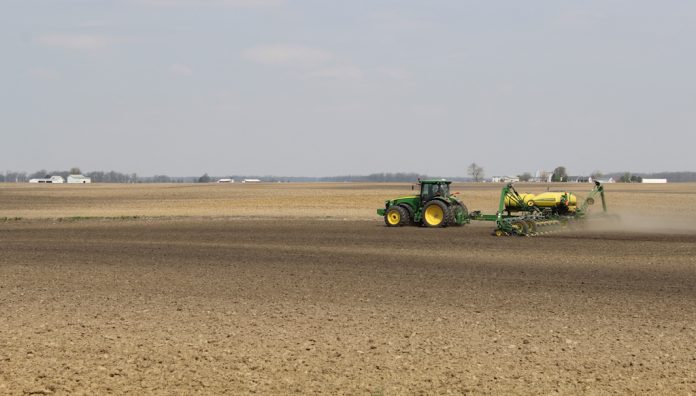By nature, I am a fundamentalist, both in grain and in faith. In grain, a fundamentalist takes actual supply and demand functions into consideration more than chart technicalities when making price projections. We fundamentalists love March 31.
Unless it does not fall within the weekdays, March 31 is a big day on the annual calendar, since it is the day the USDA Projected Planting Report and the March 1 Grain Stocks Report are released.
Overestimated?
The first is always a critical projection that can define markets for a time. The second is especially critical to those of us who believe that the crop sizes have been vastly overestimated. We hope to see some confirmation of that in this stocks report.
Going into the acreage report, I have seen estimates that group around 94 million acres for corn plantings, up from 89.7 million acres last year, and 85 to 86 million acres of soybeans.
Current market conditions make me think the corn acres are overestimated. The big guess is, however, not just what the government number is, but what the actual plantings will be.
Soybeans
My bias is that the current low price for corn makes soybeans more interesting to farmers than the pre-report estimates would indicate. Soybean prices have firmed up a little, but corn prices still bounce around on the bottom of recent trading ranges.
May corn futures had a recent low March 18 at 3.32. On March 31, they are trading almost 3.41, down a half-cent. Soybeans, however, bounced nearly a dollar in the last two weeks.
The low for May futures was March 16, at 8.21. We traded near 9.00 once last week, and are currently at 8.771⁄2, down nearly a nickel. Soybeans are being supported by talk of a smaller crop in South America, where the Brazilian crop is now 80% harvested.
We exported 15.2 million bushels last week, some of that to China. China continues to make small, regular purchases as many observers still expect them to perform fully on the trade agreement.
Meanwhile, Brazil and Argentina are having trouble getting beans to town. There is a shortage of truck drivers in the coronavirus environment, so our beans are being sourced even with the South American beans cheaper.
Lack of demand
The corn price is being driven by lack of demand in ethanol. The ethanol slump is a direct relation to the price of gasoline, since that is where the ethanol goes. The virus has people all over the world staying home and not driving.
Brazilian demand for gasoline, for example, has dropped 50%. American demand is estimated to be off by 30%, and some expect a period of 50% reduction in demand.
The lack of demand for gasoline is coupled with the trade war between Russia and the Saudis. When Russia refused to lower production, the Saudis decided to starve everybody out by increasing production. This would include the Russians and the American shale oil producers.
The combination of over-supply and lowered demand has been deadly. Gasoline is $1.50 at one station in Kinsman and $1.189 at one station in Niles. One Bazetta BP has gas at $1.299, with another dime off of that if you use a BP card.
I am enjoying the cheap gas. I am not enjoying the reduced corn prices it causes.
Wheat
The big market mover the last two weeks has been wheat. We are reminded that wheat is a food grain, and worldwide concerns of any kind affect wheat prices.
Chicago wheat has jumped almost a dollar in the last two weeks. The low came March 16, just under 4.92. We were close to 5.90 once last week, and are currently trading May futures at 5.68-1⁄4, down a penny and a quarter.
The virus fear has infected the wheat market, and it is hard to give a rational reason for this. One Chicago trader was quoted last week as saying, “What is the price of the last loaf of bread in America?”
The USDA reports come at noon Eastern time. By the time you read this, you will be reading old news. I do not expect them to show corn stocks as low as I believe they really are, but I expect some progress. It remains to be seen how the market will react.
I do believe that if they report 94 million acres to be planted to corn, it will never happen.













